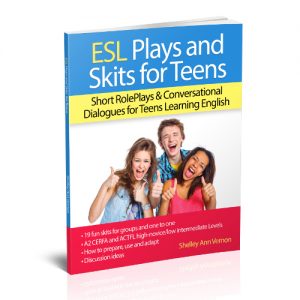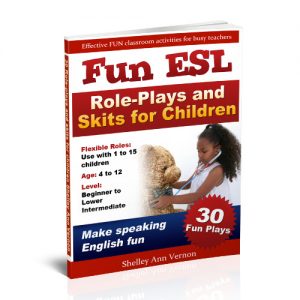We all have different learning styles. And what a great cartoon that is, to sum up the crazy nature of limited schooling. It’s a common and impoverished attitude that emphasizes reading, writing, and arithmetic, known in England as the 3 Rs, to the neglect of other subjects and topics. At primary school children need a wider spectrum to try many things and discover where their talent lies. Many laborious hours are spent on the 3 Rs and the results are still poor. Conclusion? Do more of the 3 Rs.
“It’s not working?”
“Let’s do even more of what is not working.”
This cartoon sums it up succinctly.
Limited language teaching
Often language teaching in schools focuses on reading, writing and following a textbook. Students sit there, looking at the book and listening to the teacher. Most of the class goes in one ear and out the other. In fact, students should be participating actively, not sitting passively. Language learners also need varied activities that appeal to all learning styles, not just those who learn by reading, copying and filling in blanks.
Different Learning Styles
My ESL games books aim to attract all three of the main learning styles: auditory, visual, and kinaesthetic. By varying the games, students, who all learn differently, are more likely to benefit from your lessons. Let’s have a quick look at the three main learning styles:
Auditory learners
These students learn by listening and hearing, rather than reading. You may find that they move their lips when they are reading, or even sound the words out loud. Auditory learners may struggle in a noisy environment but could benefit from class exercises with singing or where students read out loud.
Visual learners
Visual learners like drawings, graphics, diagrams, and illustrations. A visual learner might well draw pictures next to their notes as it helps them remember the lesson. Be sure to use Flashcards with visual learners.
Kinaesthetic learners
If it’s “hands-on”, these students will love it. They will love our ESL Plays, which involve movement and acting or making gestures while speaking. Keep them active with movement, since they might not like sitting still for long.
Tips
Most of us are a mixture of the three, with a preferred learning style. The more variety you have in your lessons, the better your students will fare. If you are using my games books, you will have access to everything you need to appeal to a diverse group of students.
You might also consider whether your students work better alone or in groups. For example, reading a text alone before completing a quiz as a group means both types of learners are included in the task, reducing the chances of one student being left behind. My games books incorporate quizzes and games that will appeal to all the different learning style, making your lessons fun, appealing and effective for all your students! Find all our resources here. And most of them in paperback here.
Great resources for different learning styles
-
Sale Product on sale
 Plays and Skits for Teens
Plays and Skits for Teens€19.97Original price was: €19.97.€15.33Current price is: €15.33.Rated 5.00 out of 5 based on 1 customer rating -
Sale Product on sale
 Fun ESL Role-plays and Skits for Children
Fun ESL Role-plays and Skits for Children€19.97Original price was: €19.97.€15.33Current price is: €15.33. -
Sale Product on sale
 ESL Flashcards for children – Download
ESL Flashcards for children – Download€25.00Original price was: €25.00.€19.97Current price is: €19.97.




4 thoughts on “Different learning styles”
quite interesting, could you give more information ?
Hello there, thanks for your comment. Often language teaching in schools focuses on reading, writing and following a textbook. Students need to participate actively to learn, not sit passively. Students also need varied activities that appeal to all learning styles, not just those who learn by reading, copying and filling in blanks.
These two blog posts give more insight into learning styles.
https://teachingenglishgames.wordpress.com/2015/03/26/what-types-of-learners-do-you-have-in-your-classroom
https://www.teachingenglishgames.com/how-do-i-learn
These three learning styles are the key for an accurate English learning. Have in mind the real context where the learner lives, his/her environment from where the learner takes his/her daily language. I think is the best way: learning in context.
Eslam shaalan, in Egypt says:
I benefit so much from from your creative stories and your methods
Thanks a lot.
May you send me a test or a questionnaire to distinguish among students according to their learning styles.
Here is a useful link:
http://www.educationplanner.org/students/self-assessments/learning-styles-quiz.shtml